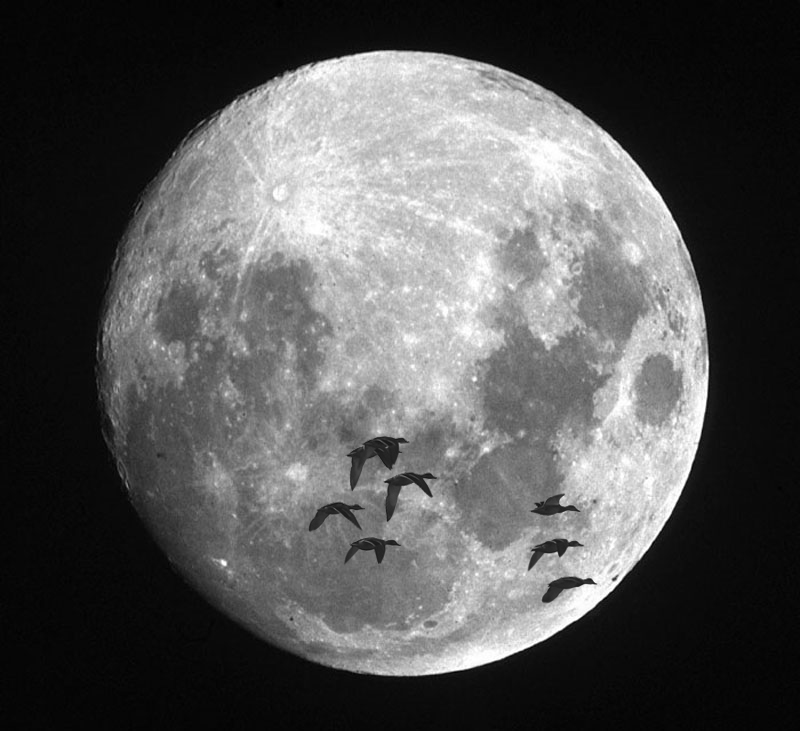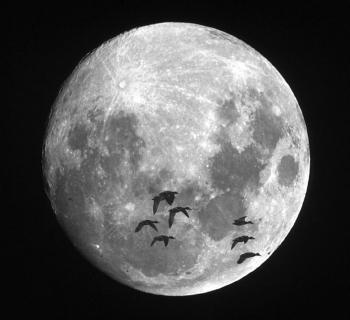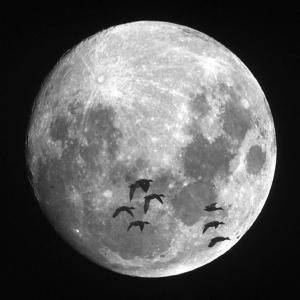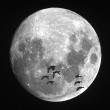By the light of the moon
When most people think of the world’s great wildlife migrations they might think of herds of zebras and wildebeest crossing the African plains or the march of the emperor penguins across the Antarctic ice.
But few could imagine that a truly stunning migratory phenomenon could have gone on over their heads last night while they lay in bed. But it probably did.
That’s because tens of millions of birds migrate south each fall night from their breeding grounds in the boreal forests of Canada and Alaska, given decent weather conditions.
Somewhere between three and five billion – yes, that’s billion with a “b” – adult birds and their offspring pour out of the region each fall to spend the winters in points south from the U.S. to South America. On average, roughly 30 to 50 million birds pass southward over the border between Canada and the U.S. every night.
And most of these birds do migrate at night. Bird species that migrate mostly during the day are actually the exception. Only hawks and a few scattered other species migrate just during the day, though some birds like ducks, geese and shorebirds can migrate both day and night. But the bulk of the billions of birds that migrate south fly at night. That’s why most people don’t know it's happening.
However, there are some ways you can experience this incredible spectacle. One of the most satisfying ways is to go out on a clear fall night with a full or nearly full moon. Stare at the moon with a pair of binoculars and, amazingly, you can often see the dark silhouettes of flying birds flashing quickly across its face. Larger birds that are farther off are easier to see and will stay in the bright disk of the moon for a longer time, while small birds that are closer to you will flash by in a fraction of second.
Another way to experience the night migration of birds is simply to listen to the sky. If you can find a quiet place to sit or lay down and focus on opening your ears to the sounds drifting down, you will soon begin to notice very short “chips” and “cheeps.” You may even have passed off some of these sounds as crickets or bats in the past – but if they are clearly coming from the dark sky overhead – these are migrating birds.
Chances are your favorite birds are among those that migrate at night, and these are quite easy to identify by sound itself. For example, Canada Geese can sometimes be heard flying over at night and their honking calls are very familiar.
Most of the calls of night-migrating birds, especially songbirds, are not easily recognizable to any but the most focused bird enthusiast or ornithologist. But an easy one for just about anyone to identify is the Swainson’s thrush, a smaller relative of the familiar American robin that breed across northern U.S. and Canada. When migrating at night, Swainson’s thrushes give a single call note that sounds like the “peep” of the tiny spring peeper frog, which is familiar to most people in the northeastern U.S.
If you think you hear the sound of a spring peeper echoing down from the night sky over the next month or so, you actually will have heard a Swainson’s thrush bravely winging its way south through the dark on its way eventually to its wintering grounds in South America. Once you experience, through sight or sound, one of the world’s greatest migratory spectacles going on over your head, you will never sleep the same way again.
Event Date
Address
United States

























